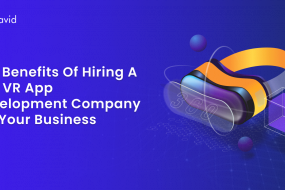
Imagine a world where factory workers collaborate across continents in real-time, virtually stepping onto production lines to troubleshoot issues. Picture designers test prototypes in immersive simulations, refining them before a single metal sheet is bent. Welcome to the industrial metaverse, a rapidly emerging ecosystem where physical and digital realms converge, unlocking unprecedented opportunities for manufacturing, logistics, and beyond.
But what exactly is the industrial metaverse? Unlike its consumer-oriented counterpart, it’s not just about escapism and entertainment. It’s a digital layer intertwined with the real world, powered by a potent blend of technologies:
- Virtual Reality (VR): Immersing users in interactive 3D environments, replicating production lines, machinery, and even entire factories.
- Augmented Reality (AR): Overlaying digital information onto physical objects, enabling workers to visualize data, receive real-time instructions, and interact with equipment in a contextual way.
- Mixed Reality (MR): Blending both VR and AR, creating hybrid environments where virtual elements seamlessly interact with the physical world.
- Digital Twins: Creating precise digital replicas of physical assets, allowing for virtual testing, optimization, and predictive maintenance.
- Artificial Intelligence (AI): Analyzing data collected through various sensors and cameras, providing insights, automating tasks, and optimizing processes.
This confluence of technologies creates a platform brimming with potential. Let’s delve into some of the key benefits and opportunities:
Enhanced Training and Collaboration Of Metaverse:
- Immersive training: Trainees can practice complex procedures in safe, virtual environments, minimizing risks and accelerating skill development.
- Remote collaboration: Experts from different locations can virtually participate in maintenance, troubleshooting, or design reviews, overcoming geographical barriers.
- Knowledge transfer: Experienced workers can easily share their expertise with colleagues through interactive, virtual simulations.
Optimized Operations and Efficiency:
- Predictive maintenance: Digital twins constantly monitor real-world equipment, detecting potential issues before they lead to downtime.
- Virtual prototyping: Testing designs in simulated environments saves time and resources, leading to faster and more efficient product development.
- Supply chain transparency: Real-time visibility into every stage of the supply chain enhances logistics and inventory management.
Innovation and Sustainability:
- Virtual simulations: Testing new processes and technologies in simulations reduces waste and environmental impact.
- Data-driven insights: AI analysis of data from digital twins and connected devices facilitates continuous improvement and innovation.
- Remote monitoring and control: Optimizing energy consumption and resource utilization across geographically dispersed facilities.
However, as with any emerging technology, challenges remain:
- Technical complexity: Integrating various technologies and ensuring seamless interoperability requires significant investments.
- Cybersecurity concerns: Securely managing data and protecting against cyberattacks in a connected environment is crucial.
- Social and ethical considerations: The impact of automation and potential job displacement needs careful attention and upskilling initiatives.
Despite these challenges, the potential of the industrial metaverse is undeniable. Leading companies across industries are already exploring its possibilities. Siemens uses VR to train workers on complex machinery, Boeing utilizes AR for aircraft assembly, and DHL deploys AI-powered digital twins to optimize logistics networks.
So, is the industrial metaverse a sci-fi fantasy or a tangible future?
The answer is neither. It’s a rapidly evolving reality demanding collaboration and innovation. By embracing this transformative technology responsibly, we can unlock a future where industries operate with greater efficiency, sustainability, and human-centricity.











